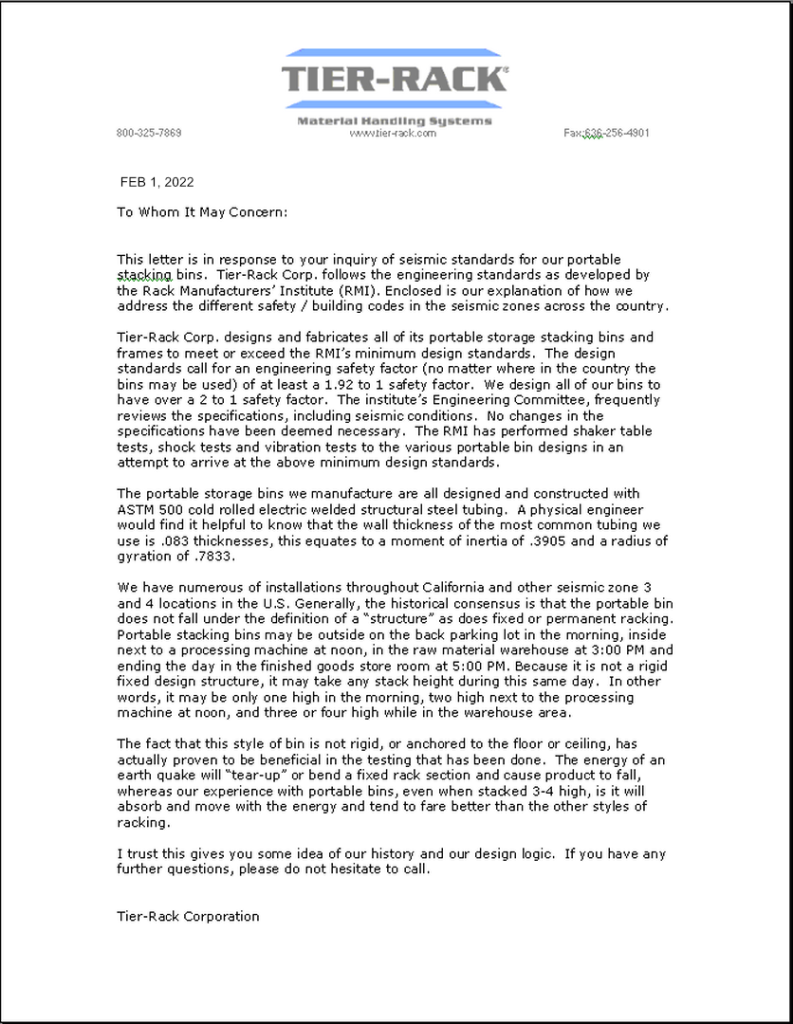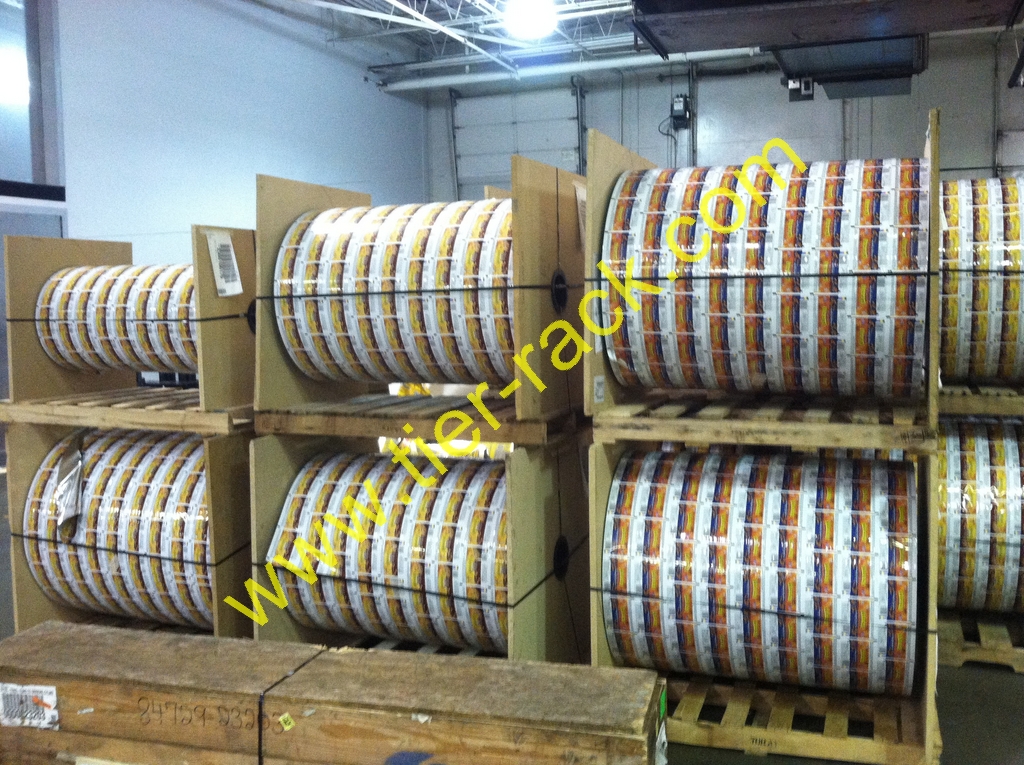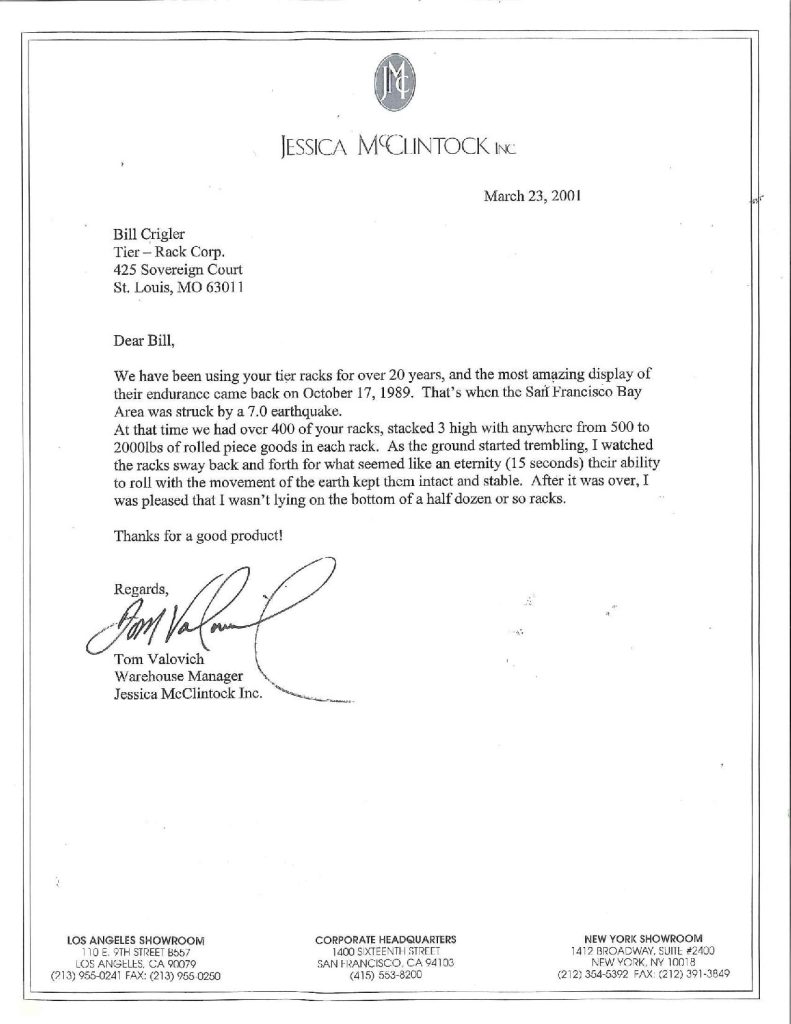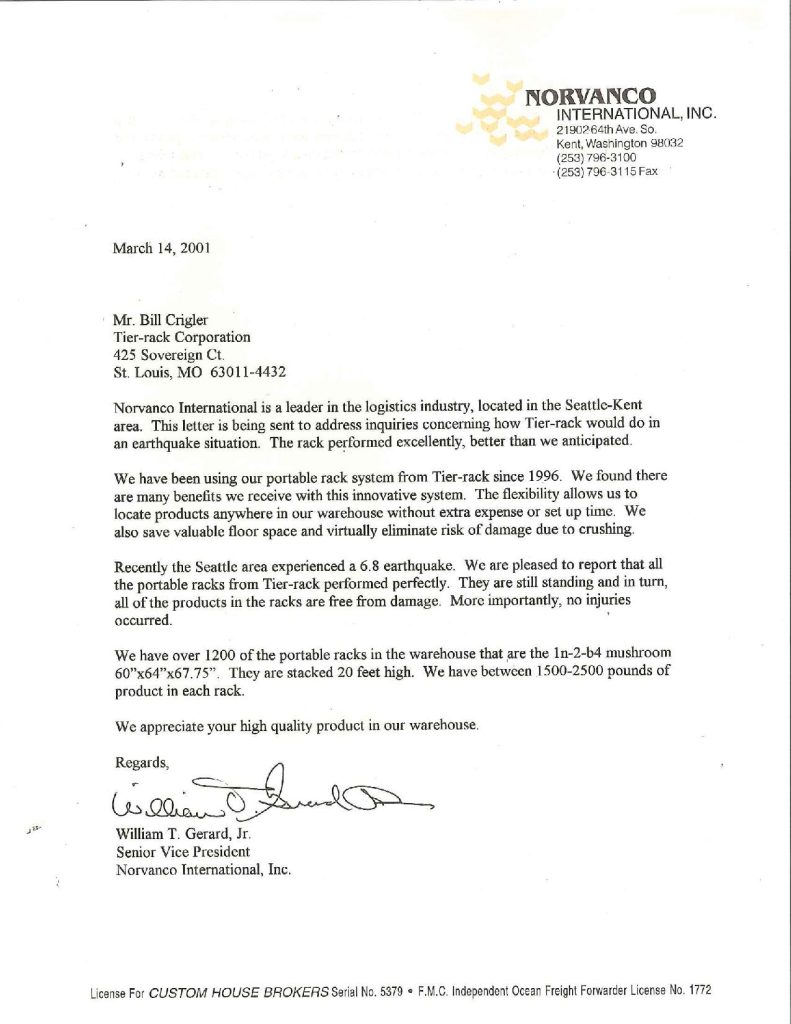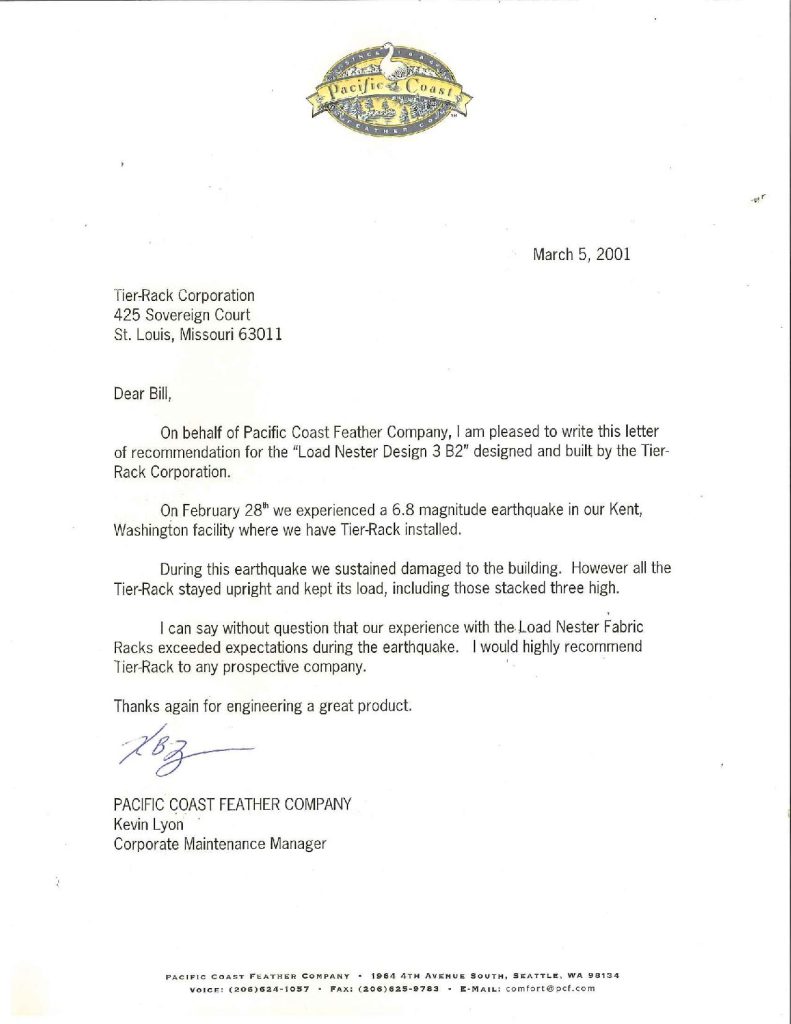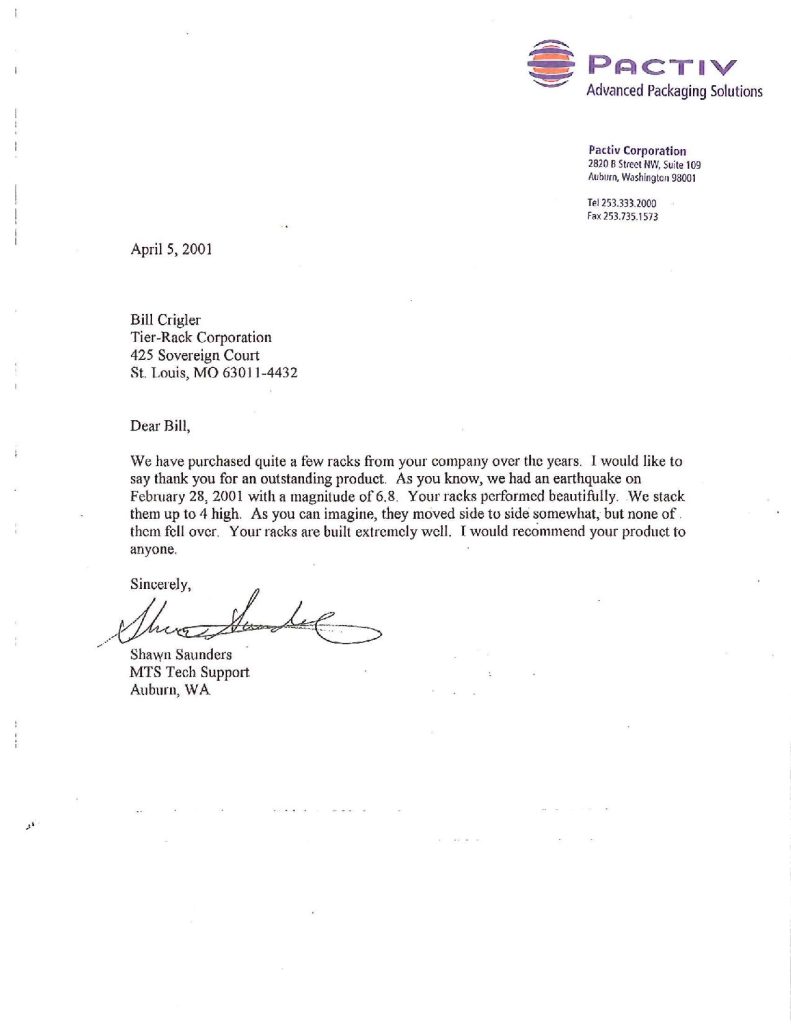SEISMIC PROOF STORAGE RACKS
Occasionally a concern arises as to how stack racks will perform during a seismic event. Static loads are easy to test and determine stability, while dynamic loads are much more difficult to analyze and account for. Anecdotal evidence shows that stackable pallets and stack rack made by Tier-Rack Corporation perform well under seismic conditions and impact due to their ability to absorb the shock waves, by swaying, and moving across the floor.
Please see the videos below for examples of how standard “rack”; in this case bolt to the floor pallet racking performs in these situations. The video below shows a 6.1-magnitude tremor hitting Poas Volcano National Park in Costa Rica.
Base Isolation
If you have watched the Discovery Channel much lately you will see numerous programs dedicated to explaining how new technology is helping design earthquake resistant buildings. It is generally referred to as base isolation.
From Scientific American, September 2004…The leading techniques “try to absorb a lot of the ground motion energy so the building doesn’t have to,” says James Malley, senior principal at Degenkolb Engineers in San Francisco. That often means inserting heavy-duty fixtures between the building and its foundation, such as base isolators that act as rubber mats, viscous fluid dampers that operate like shock absorbers,
or slide bearings that allow the building to sway instead of snap. (link to full article…http://www.scientificamerican.com/article.cfm?id=shock-absorbed
What this illustrates is similar to how our stacking pallets (sometimes called rack) perform. They will sway and rock and absorb the shock. We even have evidence of them scooting across the floor moving with the shock waves, but not failing. As opposed to the rigid structure of bolted to the floor pallet racking, our rack’s relatively “loose” fit acts as the dampers allowing for the necessary shock absorption to withstand inpact more efficiently.
Seismic base isolation…check it out here…http://www.robinsonseismic.com/index.html and here…http://articles.architectjaved.com/earthquake_resistant_structures/seismic-base-isolation-technique-for-building-earthquake-resistance/
Each municipality interprets and applies the IBC (International Building Code) differently. Some inspectors don’t use it at all and apply different codes to determine suitability of rack or bin design. Tier-Rack has no way of knowing this from township to township so it is up to you to lay the groundwork. Much of the confusion comes from the misapplication of standard “rack” codes to our portable material handling pallets. “Racking” by definition is a bolted to the ground structure. To apply those “racking” codes to our product is as erroneous as trying to apply it to a forklift.
Don’t let our name fool you. The name Tier-Rack was coined back in 1955 and is only a trade name. Our product is truly a steel pallet, portable and stackable. Steel portable stackable pallets are not structures. The steel portable stackable pallets are pieces of equipment intended to protect the product that is being moved around a warehouse. They are no different than wooden pallets or even crates. Materials in wooden crates or on wooden pallets are stored and stacked commonly on the ground (see picture to left).
The steel stackable pallets are no different. They are steel pallets which hold a product (just like wood pallets) with steel tube members that protect the product by supporting any additional steel pallets that one might stack on top of the lower steel portable stackable pallets. The tube post members are no different than the wooden panels of crates in that respect. They are not structures; there is no positive connection between each piece of the units; they are meant for temporary storage only and not intended to be permanent fixtures (just like wooden pallets of material stored on the ground).
Customer Testimonials Of Seismic Performance

